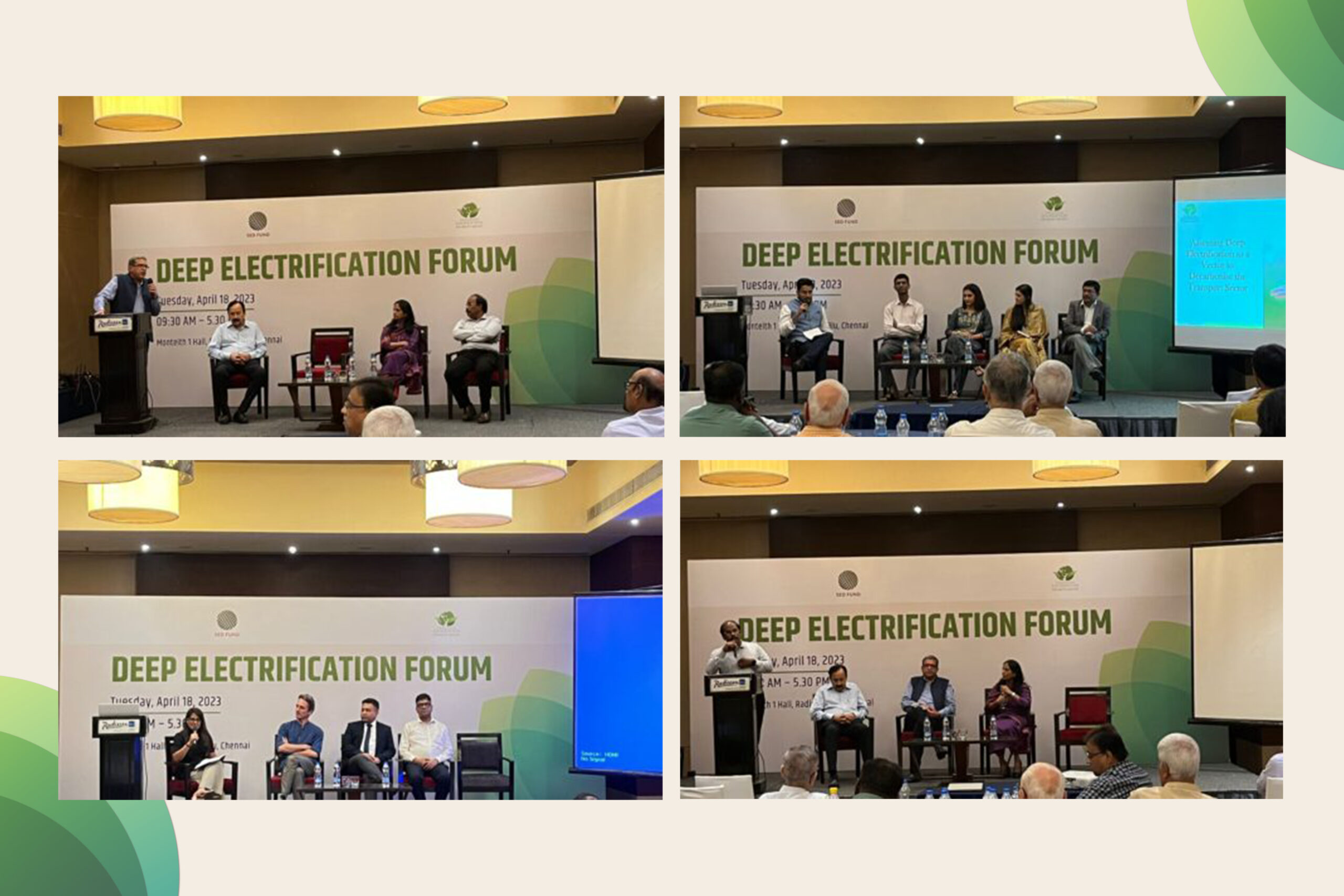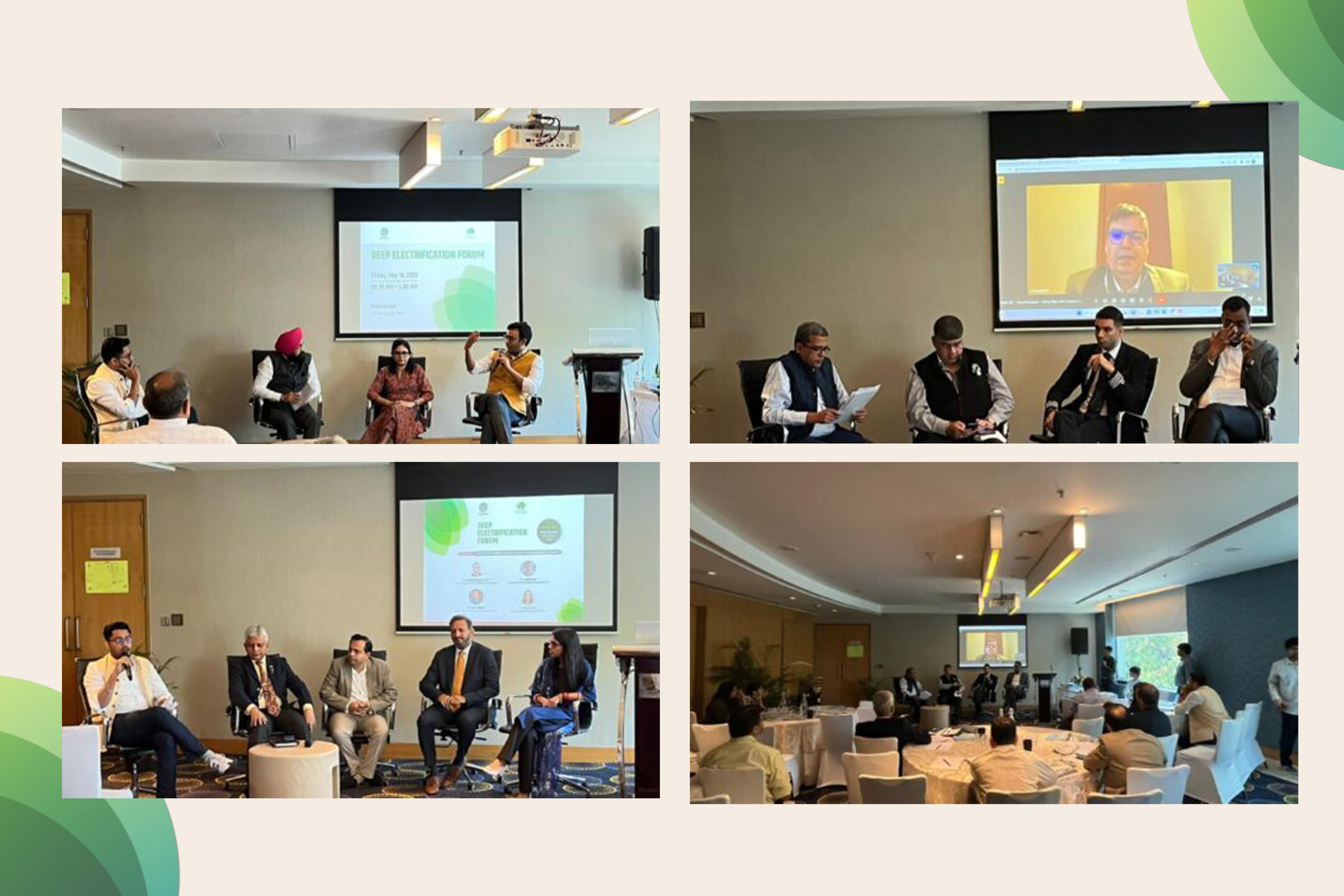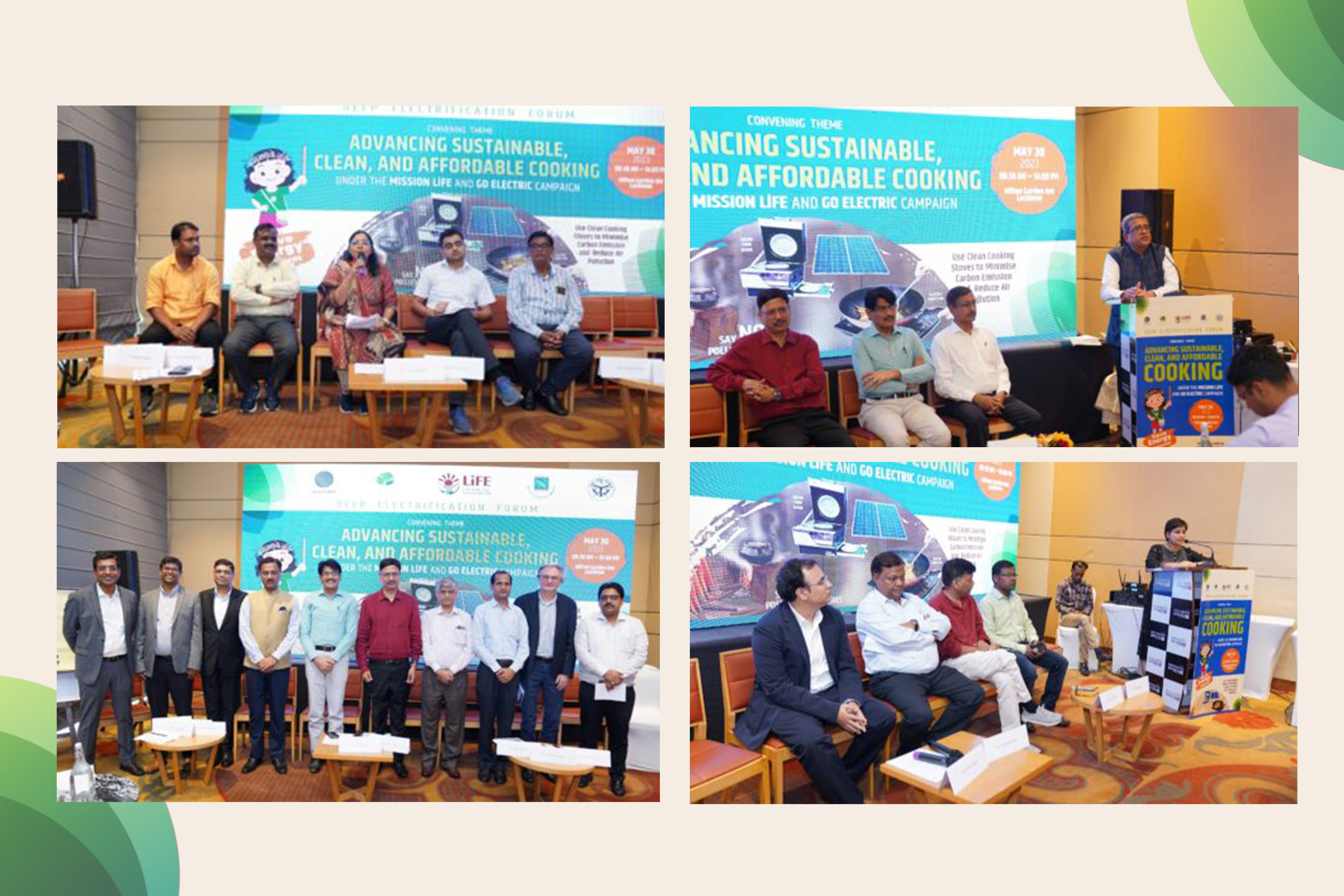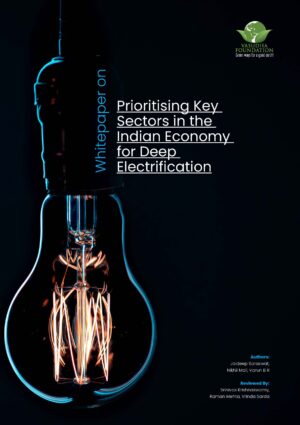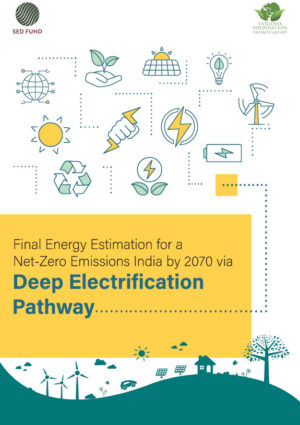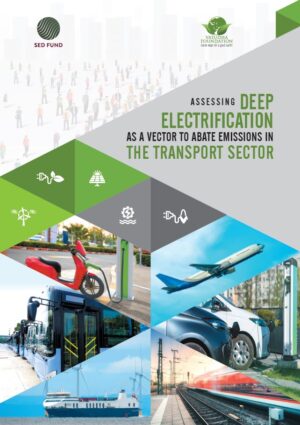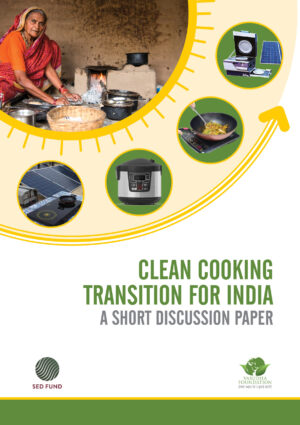
About the Forum
The Deep Electrification Forum has been conceptualised by Vasudha Foundation with support from SED Fund to engage in consensus building and policy discourse around deep electrification as a sustainable energy transition pathway to achieve India’s net-zero targets.
The Forum will delve into the impact and feasibility aspects of sectoral deep electrification programs. It will be hands-on and participatory in nature, broadly brainstorming based on themes cross-cutting across technology, finance, and policy.
The first phase of the forum convenings will focus on transport and cooking sectors, which were chosen based on criteria such as fossil fuel usage, the rate of increase in fossil fuel usage, Gross Value Added (GVA), and technology availability. These criteria were used to establish the final ranking of sectors, highlighting the urgency and potential for implementing deep electrification strategies. Cooking is being focussed due to its societal impacts including public health and to reduce exposure to import dependency on LPG and rising costs for the end users. The subsequent phases of the Deep Electrification Forum will focus on reducing emissions in the industrial sector.
Vasudha Foundation will function as the Secretariat to facilitate the implementation of the deep electrification strategy for major energy demand sectors in India.
What is Deep Electrification?
Deep electrification refers to the process of replacing any non-electric energy source using fossil fuels with technologies that use electricity as a fuel source. The idea is that ‘deep electrification’ will help lower greenhouse gas emissions and combat climate change by reducing emissions at the final consumption. However, this will increase the need for electricity from renewable energy resources. Major strategies which help in achieving it are the following:
- Increase renewable energy capacity and restrict the use of fossil fuels
- Improve energy efficiency
- Focus on low-hanging fruit sectors such as transport, buildings, and industry for direct electrification
- Indirect electrification by use of renewable energy in hydrogen production for utilization in hard-to-abate sub-sectors such as aviation and shipping
- Demand response to make the grid flexible and resilient to variable renewable energy
- Grid renovation and modernization
- Power market reforms
- Fiscal incentives
Forum Convenings
Useful Web Tool
Techno Economic Analysis of Cooking Technologies
The cooking web tool offers an indicative general overview and comparison of the mainstream cooking solutions in India. We firmly believe that this tool has the potential to offer valuable insights in promoting sustainable cooking practices.
The distinctive feature of this web tool lies in its ability to customize meal selection based on household size and culinary preferences, allowing for regional adaptations. Subsequently, the tool provides indicators to evaluate different cooking technologies based on different parameters such as energy efficiency, environmental impact, economic viability, health and safety considerations.
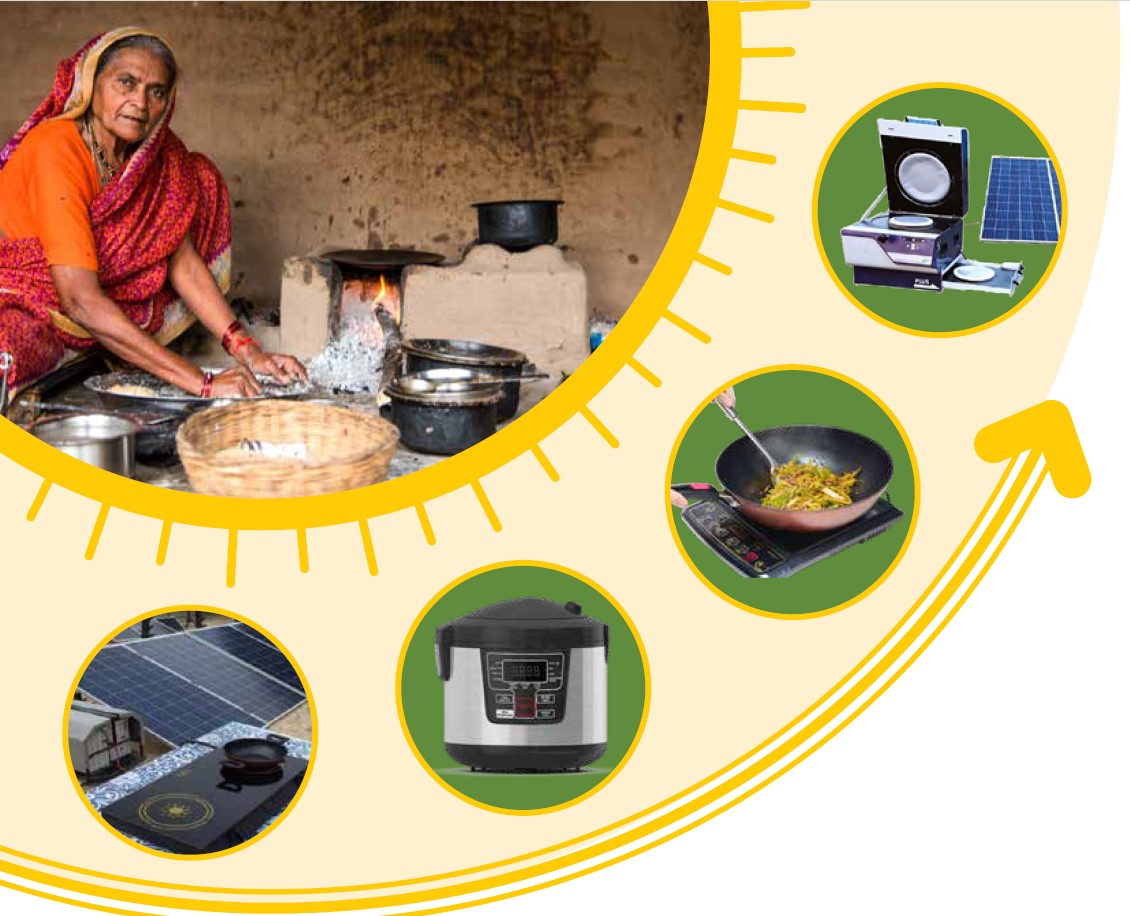
Key Publications
This paper provides a description of the methodology followed to identify and rank various sectors for deep electrification in India. The results of this exercise prompt selection of sectors to conduct a deep dive into exploring the implementation of direct and indirect electrification strategies.
The final performance score was determined by combining the performance scores obtained from the two Multi-Criteria Decision Making (MCDM) approaches, and sectors were ranked based on their cumulative performance score to emphasize the urgency and potential for implementing deep electrification strategies. The top three sectors identified are Public Electricity Generation, Transport, and Commercial.
In this paper, we examine the impact of an economy-wide deep electrification strategy on the final energy requirement for India. Multiple scenarios accounting for varying levels of direct and indirect electrification have been considered. While the majority of the energy-consuming sectors can be transitioned to direct or indirect electrification, there is a need to account for the infrastructure requirements and incorporation of digitalisation to sustain a developed Indian economy reflected by a high Human Development Index (HDI) value (≥ 0.9). Further, the adoption of circular economy practices will lead to savings across the economy, which need to be accounted for while estimating India’s final energy requirement by 2070.
As India moves steadfastly towards incorporating a higher share of Renewable Energy (RE) in its power mix, electrification of the transport sector is viewed as a low-hanging fruit towards achieving sectoral decarbonisation. Further, an assessment that was conducted to determine the priority sectors for deep electrification identified the transport sector as receiving a high priority. Deep electrification of the transport sector is to be viewed in two tranches – Direct and Indirect Electrification. Road transport has the potential to achieve 100 percent direct electrification, whereas aviation and maritime sectors can be decarbonised by adopting sustainable fuels produced through clean energy sources. Owing to this indirect form of electrification, they are aptly labelled as hard-to-abate sectors vis-à-vis decarbonisation. This report captures key insights into the process of electrifying the transport sector in India.
To facilitate a sustainable switch to electricity as the primary cooking fuel in India, several significant obstacles must be overcome, including the high upfront cost of electric cookstoves, the availability of affordable and reliable renewable electricity, and the need for behavioural change to adapt to a cultural shift. Electric cooking can be explored as a key vector in the transition to clean cooking and accordingly, this study aims to provide a techno-economic comparison between current primary cooking energy technologies used and the potential switch to electric cooking technologies.
Traditional cooking practices have consequently lead to twin problems of high levels of ambient air pollution coupled with health and respiratory hazards for some of the vulnerable sections of society including women and children. The magnitude of the challenge is large and hence should be a priority going forward. The use of cleaner and more efficient cookstoves and cooking solutions can address not only the exposure to harmful indoor air pollutants but also help in reducing the carbon emissions due to inefficient cooking resulting from incomplete combustion.






